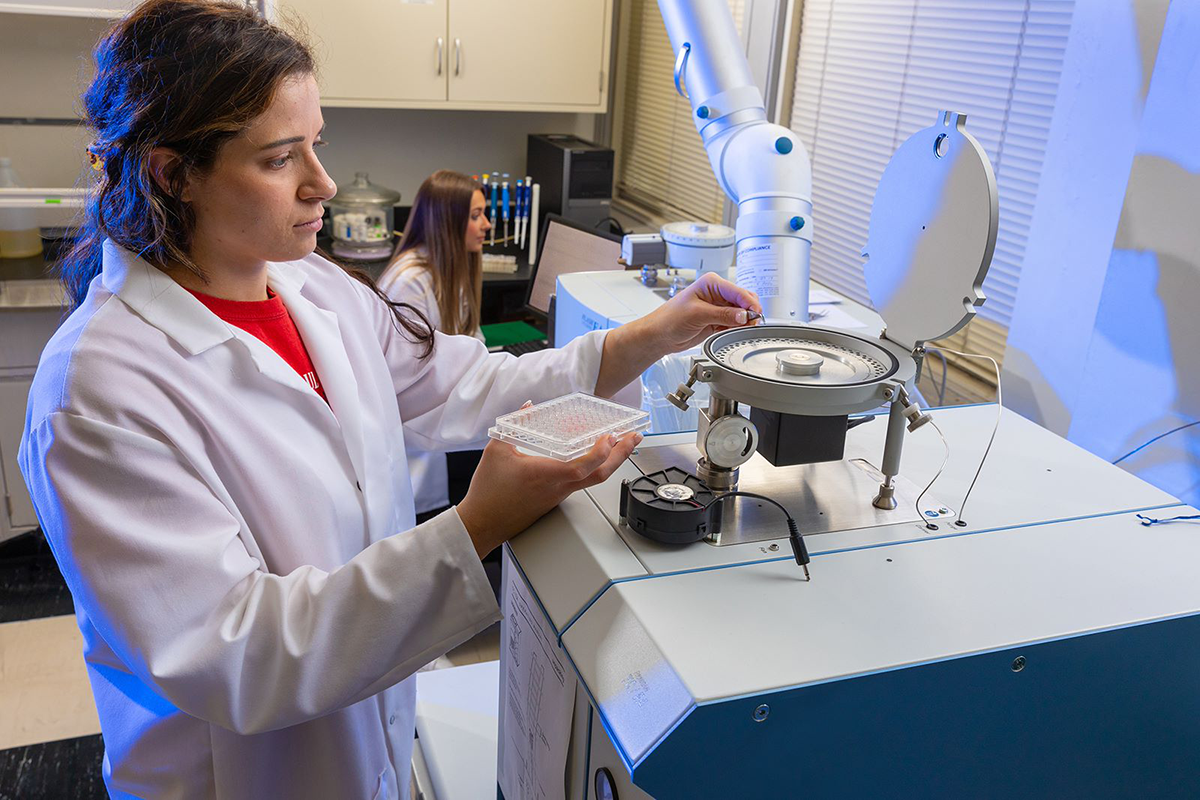Dr. Brian Schubert’s internationally recognized research is coming out of the woodwork.
Schubert, an associate professor in the University of Louisiana at Lafayette’s School of Geosciences, leads its stable isotope laboratory. Faculty and student scientists analyze the chemical composition of wood by measuring oxygen isotopes in the growth rings of trees.
The process enables researchers to study past climate change; it also has traditionally required time-consuming chemical pretreatment of samples that are widely used to obtain accurate measurements. “Methods for getting good measurements take a lot of time,” Schubert explained, “so we’ve been examining ways to simplify the steps and streamline the chemistry.”
That means ascertaining which, if any, wood or fossils from different periods in Earth’s history yield valid data without being pretreated. And, while the stable isotope laboratory houses samples ranging from fossils millions of years old excavated from Siberian sediment to wood slivers culled from living trees, “we were missing samples that were hundreds of years old,” he said.
Schubert “filled the gap” for his study with field work much closer to home than Siberia – at the J. Arthur Roy House, the oldest building on campus. The Roy House, built in 1901, is the main home of the Center for Louisiana Studies, a hub for scholarly investigation of Louisiana’s people and history. It attracts academics and scholars from across the world.
Schubert was drawn to the center by a recently completed renovation that restored the house to its former grandeur. That happened after he tuned in to a segment about the project on KRVS Radio Acadie, the NPR station on campus. One phrase in particular caught his ear – “old growth trees.” Schubert reached out to the center, inquiring about the possibility of obtaining a sample for the lab.
Request granted, he retrieved a block of longleaf pine hewn from an unsalvageable second-story porch column by a carpenter. The reclaimed wood’s freshly sawed sides revealed a beautiful, tight pattern of old growth tree rings ideal for study. “It was the perfect piece of wood and it was just 200 yards away. The timing worked out perfectly,” he said.
So did Schubert’s study. Findings were recently detailed in “Chemical Geology,” an academic journal published by the European Association of Geochemistry. Researchers concluded that chemical pretreatments are unnecessary in living or recently felled trees. “Such applications are required only when studying very old wood, millions of years old,” Schubert said.
The determination is significant, he added: “It will allow for higher throughput and higher-resolution sampling of archeological wood. And scientists will be able to test samples at less cost.” The discovery also means that the stable isotope laboratory will be able to better examine weather events that impact the region. including hurricanes, floods and droughts.
“Most of our work has involved fossils from China, the Arctic, Siberia – and that tells us about large scale changes in climate across broad regions of the world. But, if we want to get a record of climate relevant to Louisiana, we can now do that at really high resolution,” Schubert said.
“So, our next piece of detective work will be trying to figure out where the tree that produced this block of wood was felled, because it was likely sourced not far from here,” he added.
Photo caption: UL Lafayette faculty and student scientists analyze the chemical composition of wood by measuring oxygen isotopes in trees’ growth rings in the stable isotope laboratory. The work has yielded clues about climate change and, most recently, more efficient, cost-effective research methods. Photo credit: Doug Dugas / University of Louisiana at Lafayette
